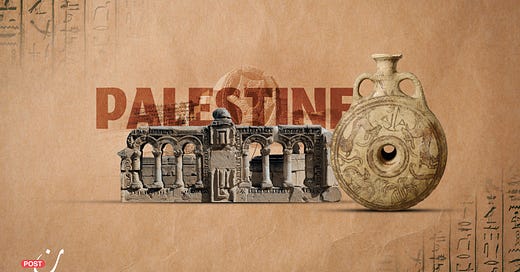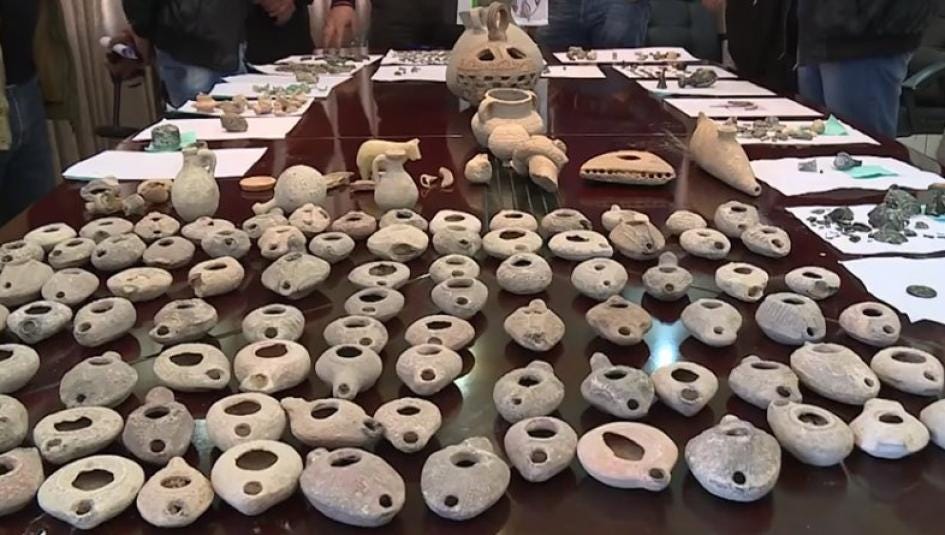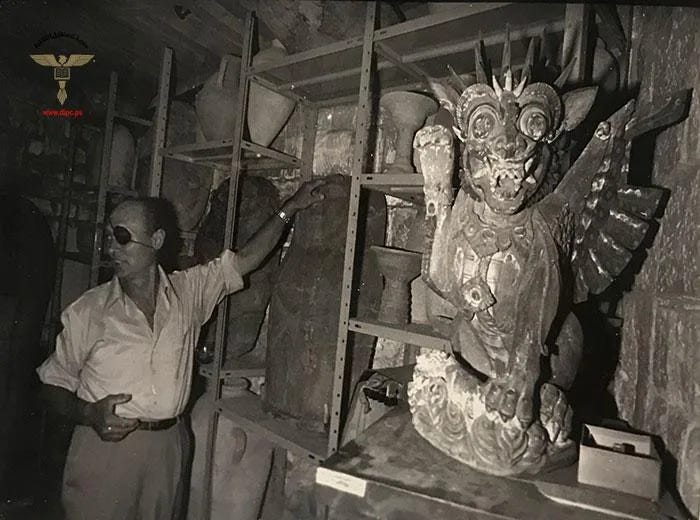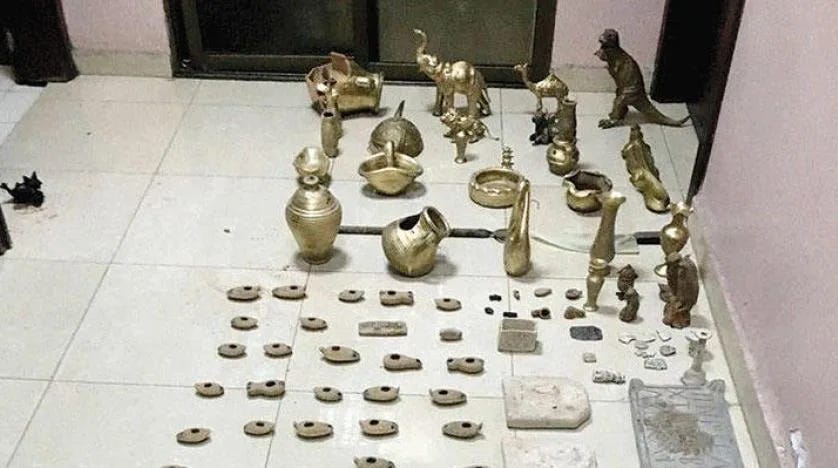It is no secret that historical Palestine—stretching over 27,000 square kilometers—has been a crossroads of civilizations and empires. This is due not only to its strategic geographical location, but also to its deep religious significance in the three monotheistic faiths. At various times, it served as a capital for both Christian and Islamic empires. Those who passed through left behind remnants and monuments that bear witness to their presence and settlement.
According to British Mandate-era documents, Palestine was once home to 35,000 archaeological sites—ranging from cities and villages to caves, mosques, churches, towers, and military fortifications. But this number has since dwindled significantly. While antiquities across the globe face the threat of looting by traffickers, Palestine’s situation is compounded by the Israeli occupation, which plays a central role in the ongoing theft of Palestinian heritage.
Israel’s Occupation: Theft on an Industrial Scale
The West Bank alone once held 12,032 archaeological sites and landmarks, while the Gaza Strip had 184. Following the 1967 war and Israel’s occupation of the West Bank, Gaza, and Jerusalem, the number of these sites dropped to 6,963. Between 1967 and 1998, Israel carried out 171 excavation operations in the West Bank and 90 in Jerusalem alone.
Moshe Dayan, Israel’s defense minister during the 1967 war, was the godfather of antiquities theft. Even before holding office, he was notorious for looting Palestinian artifacts. Archaeologist Raz Kletter documented 35 archaeological sites plundered by Dayan and his associates in the areas occupied in 1948.
Over the course of three decades (1951–1981), Dayan amassed a personal collection of over 800 artifacts, many of which date back thousands of years—from as early as 7000 BCE to the so-called destruction of the First Temple in 685 BCE. His collection included pottery, ceramic vessels, statues, sarcophagi, and more.
In 1992, Israel opened the “Bible Lands Museum” on the land of the depopulated Palestinian village of Lifta near Jerusalem. The museum displayed pottery, lamps, jars, and artifacts from the Iron Age and various Bronze Age periods, in addition to items from the sixth and seventh centuries CE.
Tragically, the 1993 Oslo Accords—signed by the Palestine Liberation Organization and Israel—effectively relinquished Palestinian claims to more than half of the antiquities in the West Bank and Gaza. Around 60% of these sites fall in Area C, which is under full Israeli security and administrative control. This includes nearly 7,000 sites and 50,000 historic buildings.
Although international law obliges occupying powers to protect cultural heritage, the Oslo Accords deferred the issue of antiquities to final status negotiations—talks that have stalled for years. In the meantime, Israel has sidelined the Palestinian Authority, reducing it to a role focused on security and economic management.
The Separation Wall: A Path of Cultural Theft
Israel used the construction of the separation wall in the West Bank as a means to seize even more archaeological sites. In 2003, during the planning phase of the wall, an Israeli official admitted that its route could be altered for various reasons—including the presence of archaeological sites. When such sites were discovered along the proposed path, the route was redrawn to ensure they remained within occupied territory.
Researcher Adel Yahya, through the Institute for Palestine Studies, outlined three main methods used to appropriate archaeological zones through the wall:
Rerouting to “avoid” destruction: This tactic allowed the wall to penetrate deeper into the West Bank, resulting in greater land seizure.
Isolating and annexing sites: Many historical landmarks were detached from their natural surroundings and annexed to Israel. A prominent example is Rachel’s Tomb in Bethlehem. The wall was deliberately rerouted to separate the tomb and its adjacent Islamic cemetery from the city, completely cutting off Palestinian access.
Rapid excavations: In some cases, Israeli authorities conducted hurried digs at newly discovered sites along the wall’s route—especially those they deemed “less significant.” Looted artifacts were transferred to Israel. These operations were overseen by the Israeli Civil Administration’s Department of Antiquities, part of the Defense Ministry.
When time or resources were insufficient for excavation, sites were buried under thick layers of sand before the wall was built on top—effectively preserving them for future looting. This has occurred in several parts of Area B.
Even these hasty excavations often caused significant damage. Overseen by underqualified archaeology students from Israeli universities and carried out by Arab laborers, the primary goal was speed: to extract and relocate artifacts to Israel before the wall’s completion.
Undermining Restoration Efforts and Enabling Looting
In parallel, Israeli authorities have systematically obstructed Palestinian efforts to preserve and restore their own heritage. The Palestinian Ministry of Tourism and Antiquities has been unable to fully protect sites from looters and smugglers, especially since most of these sites lie in areas beyond Palestinian jurisdiction, as dictated by the occupation.
The West Bank has seen waves of illegal excavations. Experts estimate that around 200,000 artifacts are smuggled out of occupied Palestine each year—including ancient coins.
As in many developing nations, the economic downturn exacerbates looting. During the First Intifada and the Gulf War, both Palestinian and Israeli antiquities authorities recorded a 300% surge in artifact theft and illicit trade. Hobbyist collectors—Israeli and foreign alike—account for roughly 90% of those involved in the looting of Palestinian antiquities.
Under Palestinian law, antiquities trafficking carries a penalty of 3 to 10 years in prison and a fine of up to $130,000. In 2018, Palestine passed new legislation declaring all artifacts dating prior to 1917 to be integral to the national cultural heritage. The Palestinian Authority has also signed multiple international conventions to protect its patrimony.







